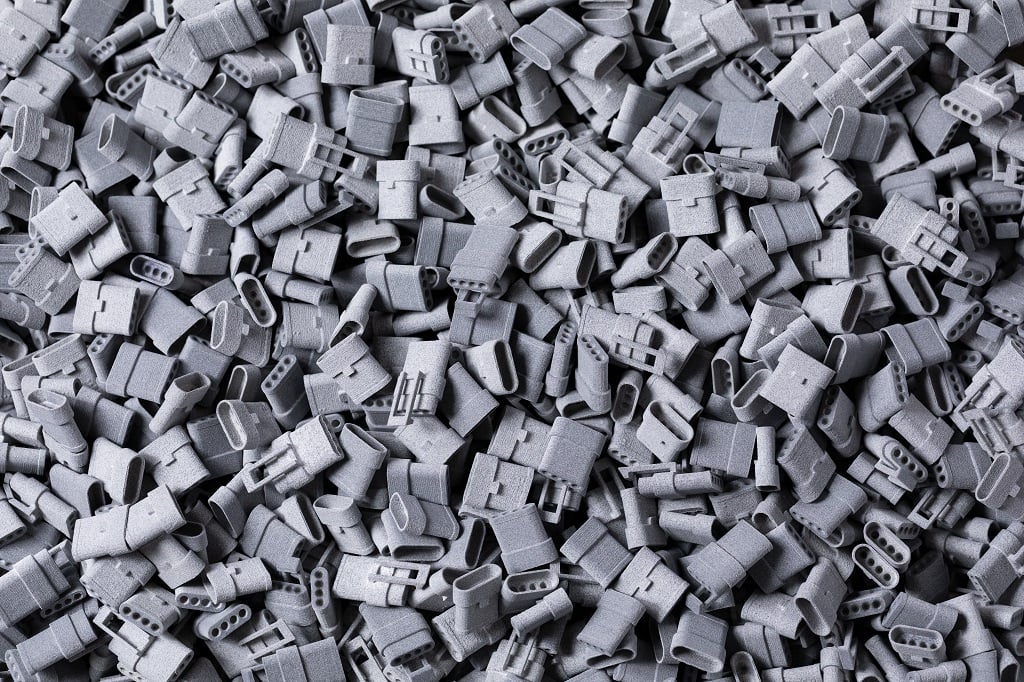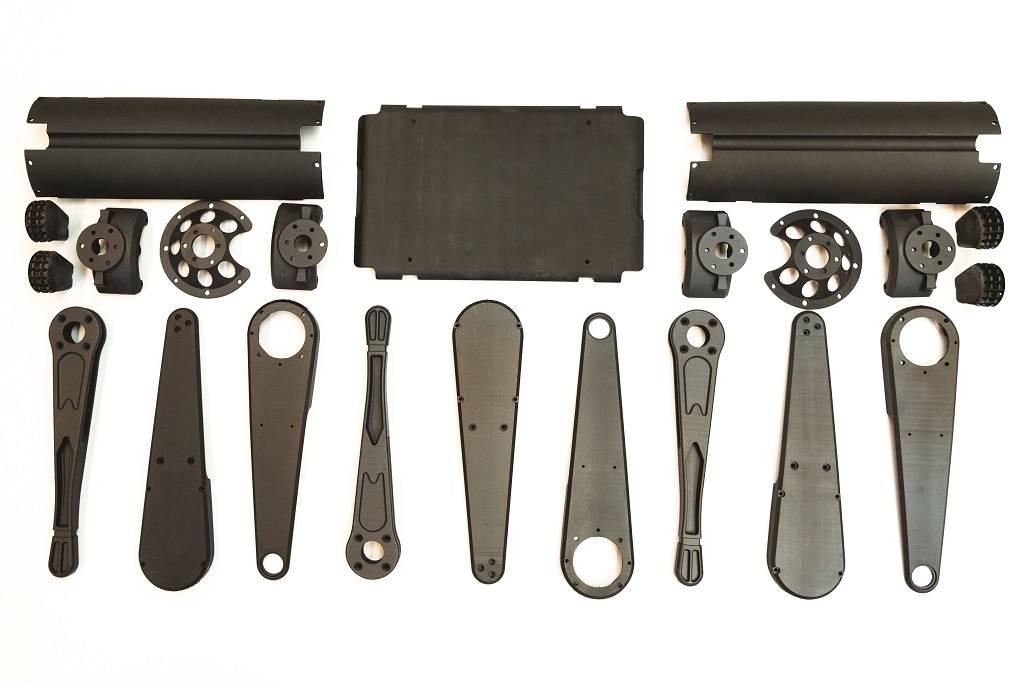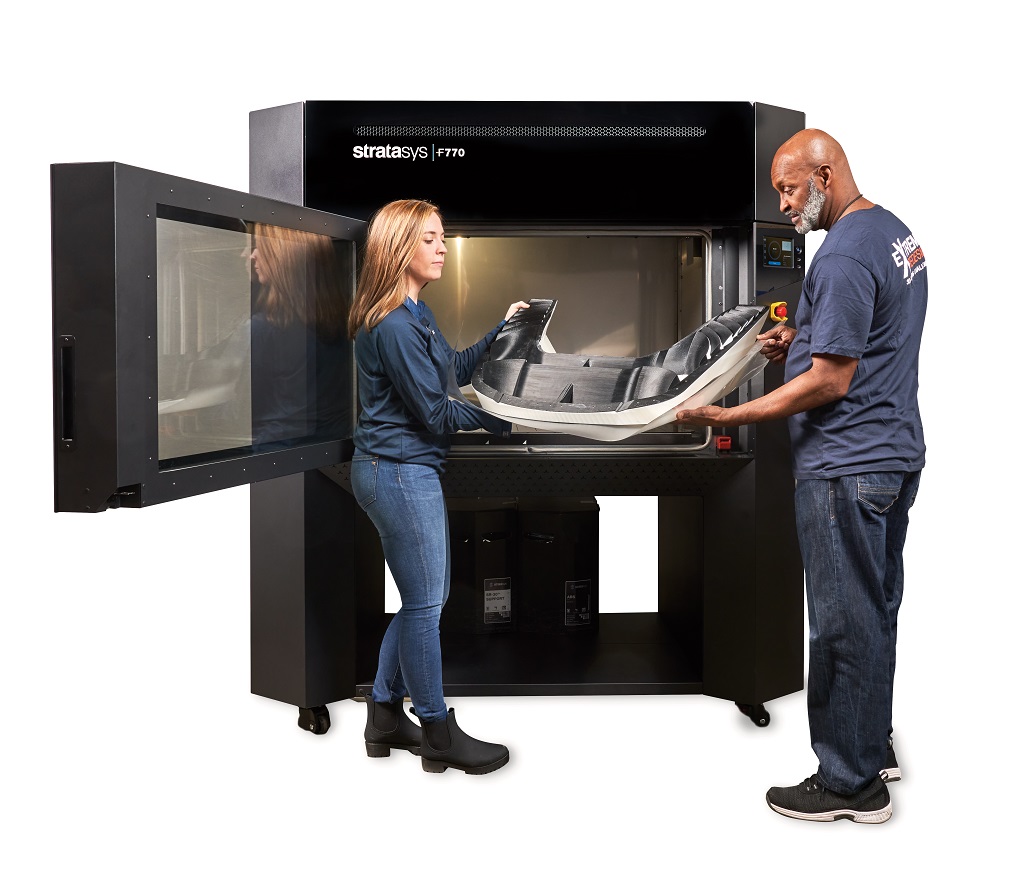
This week, Stratasys doubled down on its additive manufacturing strategy for production.
The highlight of the strategic focus is in three new 3D printers geared toward polymer manufacturing each using a different 3D printing process:
- FDM: Stratasys F770
- DLP/P3: Stratasys Origin One
- SAF: Stratasys H350
Stratasys 3D Printing Legacy
Stratasys is one of the mainstays in the 3D printing industry. In many ways, it’s a legacy company: it was one of the first in 3D printing; it was the first with FDM. Stratasys has long held some of the patents at the heart of much of 3D printing as we know it. Whatever you may think of patents and closed-versus-open source, the fact remains that the company earned its place in innovation in the early days of 3D printing as an industry.
But we’re not in early days anymore. We’ve moved from “3D printing” being synonymous with “rapid prototyping” to a meaning more attuned to “additive manufacturing”: part of the manufacturing process.
It’s been a gradual-then-all-at-once sort of transition toward a production focus, as 3D printing has moved toward actual qualifiable, repeatable production quality. To compete against traditional means of manufacturing, 3D printing has to at a minimum meet, and ideally exceed, existing standards of quality, pricing, and timing. Realistically, the best place for 3D printing is alongside traditional manufacturing, working out the best uses for each technology. That’s another conversation — but also one that the companies at the heart of the additive manufacturing industry are very well attuned to and are poised to drive forward.
Stratasys is positioning itself to be one of the companies driving the conversation.
3D Printing Inflection Point

Additive manufacturing has long been a technology/industry of promise: complex geometries, lightweighting, faster time-to-market; take your pick, there’s a promise about what these processes can improve. But now, the Stratasys team says, “additive manufacturing can deliver the promise.”
So began Dr. Yoav Zeif, Stratasys’ CEO, at the press conference detailing the new 3D printers this week. He continued:
“We are so certain we can deliver on this because the whole additive manufacturing industry is at an inflection point. Our commitment and obligation as a leader in this industry is to take this industry into manufacturing.”
Part of Zeif’s certainty also lies externally:
“The environment is changing,” he added. “If you want to be a manufacturer today, additive manufacturing needs to be part of it. You have to expect the unexpected.”
Part of that “unexpected” proved itself out as additive manufacturing came in as a stop-gap (if not more permanent) supply chain solution as the pandemic closed borders and interrupted workflows over the last year. This was further underscored when the Suez Canal was blocked, when Texas was hit with wild weather, and when ports were backed up with a sudden influx of non-Ever Given-stoppered ships congregated at their destinations. To name a few.
“During the pandemic, we as Stratasys, and with Origin as well, were first responders because the supply chain was broken,” Zeif said. “Additive manufacturing is not a luxury anymore. It’s not something ‘maybe we’ll have it, maybe not’; it’s part of the plan for the future. It’s not just a nice alternative, it’s something needed in order to adapt to the new world. The world after the pandemic is not the same world. It’s the same with trade disruption, with hypercompetition; there is a need to gain flexibility.”
Here, he pointed to the current status of additive manufacturing. Namely, it’s at an inflection point of real adoption. Among the competitive advantages he outlined for the technology are:
- Onshoring / local production capabilities
- Flexibility / distributed production
- Faster time-to-market
- Efficiency and sustainability
- Better parts
This all wraps up in the concept of “Additive Manufacturing 2.0,” which is increasingly being adopted as a way to put a name to the maturing industry. It is, as Zeif said, “a reflection of being at an inflection point, where it is our obligation to take it into manufacturing.”
Stratasys Manufacturing Strategy

For Stratasys, the way forward in manufacturing is a focus on polymer production via 3D printing. And by “production,” they mean a full end-to-end portfolio that delivers solutions from prototyping to production.
That portfolio now encompasses five additive manufacturing platforms:
- PolyJet: prototypes / medical modeling
- Detailed, multi-color, multi-material realism
- Stereolithography: prototypes / tooling / molds
- Proven reproducibility and dependability with powerful industrial-grade materials
- Industrial FDM: manufacturing tools / production parts
- World-class accuracy and consistency, and unmatched material breadth
- Origin P3: mass production
- Highly intricate and accurate parts, and broad third-party material options
- SAF: mass production
- Cost-effective parts of all sizes with precise control
We took a look at the manufacturing strategy at hand when Stratasys announced its new SAF production-focused platform. Before that, we’d been examining their motivations in other major recent moves:
- Stratasys acquired Origin, adding P3 technology to the portfolio
- Stratasys acquired RPS, enhancing its SLA positioning
Expansions of hardware and materials on the FDM and PolyJet sides also highlight the company’s commitment to these technologies.
Stratasys now has offerings poised to compete with some of the other leading options in each area. SAF, for example, can be seen as a pretty direct competitor to HP’s MJF technology. SLA and P3 offerings could be targeting applications often seen on 3D Systems, Formlabs, or Carbon equipment. FDM, as always, competes with other FFF (the non-trademarked equivalent extrusion-based process) offerings across the board.
It’s a comprehensive portfolio, and with this week’s introductions of new 3D printing platforms across three technologies, is fulfilling promises the company’s CEO has been making about steps forward with focus on polymer production.
The only questions are, as ever, those perhaps remarkable for their lack of being remarked upon. Over the years, Stratasys has announced with fanfare and then quietly stopped mentioning a few introductions. Most recently, that’s the Layered Powder Metallurgy that was set to bring metal 3D printing directly to the Stratasys (not just Stratasys Direct Manufacturing) portfolio. There’s currently no metal option on Stratasys’ materials page. And we still haven’t forgotten the production-targeting Infinite Build Demonstrator. Still, sometimes things just don’t work out, and we don’t always get a clear “Hey, we’re not doing this anymore” to close the chapter.
But the chapter we’re on does seem promising indeed. Stratasys is going full steam ahead with its polymer production strategy, and it seems there’s some real foothold and follow-through here.
Via Stratasys
